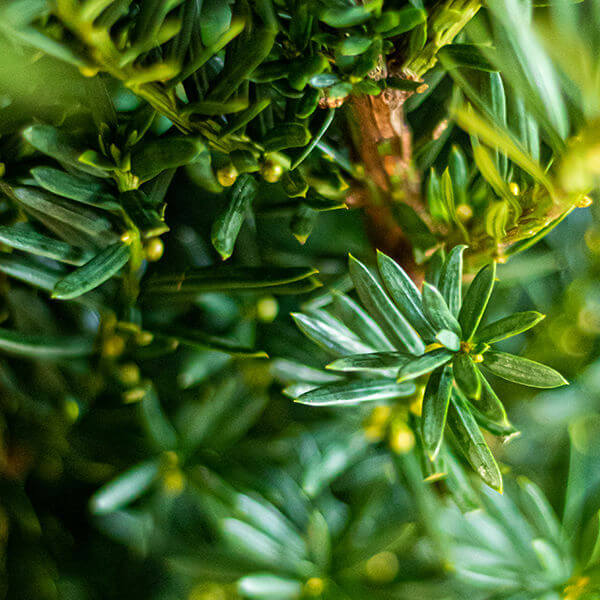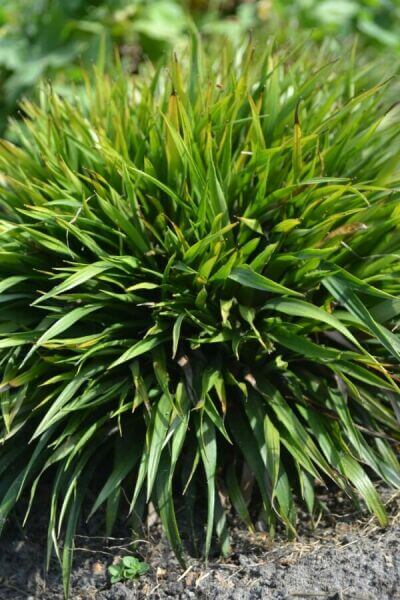Hedging Plants For Erosion Control
Hedging Plants For Erosion Control
Blog Article
Hedge Plants For Formal Gardens
Boost your garden's attraction with rich hedge varieties such as Yew (Taxus), Thuja, Laurel, Photinia, and Bamboo, celebrated for their structural integrity and ecological advantages.
Yew and Thuja offer evergreen coverage and winter resilience, while Laurel provides fast development and broad, fragrant leaves.
Photinia includes seasonal charm with its lively red foliage, and Bamboo lends a low-maintenance, peaceful ambiance.
These hedges enhance air quality, reduce sound, and develop tranquil, private spaces.
Proper planting, spacing, and upkeep guarantee energetic development and environmental consistency.
Check out how these lush varieties can raise your garden's appeal and well-being.
Secret Takeaways
Transform Your Garden With Lush Hedge Ranges
- Select Yew for its thick, evergreen growth and unparalleled longevity.
- Choose Laurel for its quick development and broad leaves, guaranteeing quick privacy.
- Select Photinia for its vibrant seasonal foliage, which turns a striking dark red.
- Utilize Bamboo for a low-maintenance, winter-hardy hedge with aesthetic appeal.
- Space plants 2-3 per meter and prune frequently for optimum development and health.
Popular Hedge Plants
When transforming a garden with lavish hedge ranges, it's important to think about popular hedge plants such as Yew, Thuja, Laurel, and Photinia due to their special qualities and benefits.
Yew (Taxus) is highly respected for its longevity and dense, green growth, making it a prime choice for withstanding landscapes.
Thuja is kept in mind for its evergreen foliage and robust winter durability.
Photinia includes seasonal vibrancy with red leaves that darken over time, producing vibrant visual appeal.
Laurel offers quick growth and fragrant, broad leaves, suitable for quick privacy.
Additionally, Bamboo is an excellent choice for atmosphere, providing a low-maintenance, winter-hardy choice that enhances the garden's aesthetic with its elegant, swaying walking canes.
These choices accommodate a variety of horticultural needs and preferences.
Advantages of Garden Hedges
Garden hedges provide a wide variety of advantages, making them an important addition to any landscape. These natural barriers are economical to execute and provide substantial wind security, enhancing air blood circulation and adding to noise decrease. The thick foliage of hedges like Thuja and Beech ensures personal privacy by obstructing visibility, producing a remote and serene environment.
Hedges likewise play a crucial function in microclimate regulation, supplying a stable environment that cultivates plant growth and decreases temperature level fluctuations. Their detailed leaf structures filter contaminants, improving air quality and adding to a much healthier garden community.
Moreover, hedges master noise decrease, taking in and deflecting sound waves to lower ambient noise levels. This double functionality of offering both visual and acoustic privacy improves the general serenity and aesthetic appeal of any garden.
Planting and Upkeep Tips
For an effective hedge, careful preparation of the planting location is crucial. Guarantee the soil has proper pH and drain to support strong root advancement.
Area the plants appropriately for the picked species. Water the hedge often throughout its preliminary growth stage, changing as needed with seasonal changes.
Execute a organized pest control and disease prevention technique, utilizing organic or chemical treatments when essential. Regularly examine for aphids, termites, and fungal infections.
Apply mulch to maintain moisture and suppress weeds. Seasonal pruning promotes dense development and air circulation, important for plant health.
Following these standards will assist you cultivate a lively, well-maintained hedge that improves the charm of your garden.
Spacing and Cutting Standards
Spacing and Cutting Standards
Appropriate spacing and cutting are important for cultivating healthy, visually appealing hedges. Adequate spacing ensures each plant receives sufficient nutrients, light, and airflow.
Follow these guidelines for optimal hedge maintenance:
- Spacing: Position hedge plants 2-3 plants per meter to encourage robust development.
- Pruning Strategies: Routine pruning is necessary for maintaining desired hedge height and shape. Trim brand-new development in summer season and cut down older wood throughout winter season.
- Seasonal Care: Adjust trimming schedules and methods according to seasonal requirements to ensure plant health.
- Hedge Height: Frequently display and cut to preserve the desired hedge height and achieve consistent looks.
Adhering to these actions will ensure your hedge thrives, enhancing both the appeal and performance of your garden.
Selecting the Right Hedge
Choosing the Right Hedge
Picking the proper hedge involves evaluating aspects such as mature height, foliage density, and ecological durability. Successful hedge plant choice needs understanding each types' growth characteristics and site-specific flexibility.
For example, Yew (Taxus) uses outstanding longevity and dense development, while Thuja is noteworthy for its winter strength. Additionally, thinking about maintenance requirements is vital; fast-growing species like Laurel or Privet need regular cutting, whereas low-maintenance alternatives like Bamboo or Ivy might be preferable for those seeking very little upkeep.
Ecological factors such as soil type, light schedule, and moisture conditions must likewise guide the choice procedure. This careful technique ensures the selected hedges will grow, offering both practical and aesthetic benefits to the garden landscape.
Shipment and Planting Advice
To guarantee your hedge plants thrive, they must be provided by specialized couriers and planted immediately upon arrival.
Follow these necessary steps for successful planting:
- Soil Preparation: Enhance the soil with natural matter to enhance drain and nutrient content.
- Planting Depth: Produce a trench twice the width and equal to the depth of the root ball.
- Watering Methods: Water thoroughly after planting, keeping the soil consistently moist but not saturated.
- Mulching: Use a layer of mulch to maintain moisture and reduce weeds.
Consumer Support and Service
Provided the essential role of prompt support in horticultural pursuits, our customer assistance team is readily available 6 days a week through telephone, e-mail, and social networks to provide skilled suggestions and quickly deal with any issues. Their commitment to fast reaction times makes sure client satisfaction by solving inquiries connected to plant health, ideal planting approaches, and maintenance schedules.

Schedule
-------------------
6 days a week
Social network
This comprehensive assistance system, enhanced by an outstanding 9.3/ 10 customer ranking, highlights our dedication to enhancing the gardening experience for every single client.
Regularly Asked Concerns
How Long Does It Take for Hedge Plants to Develop?
Hedge plants normally require one to three years to end up being completely developed, with the precise duration differing by species and growing conditions.
Reliable care during this important period is vital for robust development. Constant watering, watchful weed control, and suitable fertilizer application are pivotal in promoting strong root development.
For instance, fast-growing species like Laurel may establish more quickly, while slower-growing varieties such as Yew may take longer. Persistent maintenance speeds up the establishment process, resulting in thick and healthy hedges.
What Are the Best Hedge Plants for Personal Privacy?
The question of the finest hedge plants for privacy includes assessing evergreen and deciduous choices.
Evergreen hedges like Thuja, Laurel, and Cypress provide year-round protection, ensuring constant privacy.
On the other hand, deciduous hedges such as Beech provide seasonal personal privacy, shedding leaves in chillier months.
Key upkeep ideas for privacy hedges include routine trimming, fertilizing in spring, and proper spacing-- usually 2 to 3 plants per meter.
In addition, consistent watering and diligent weed removal are essential for promoting healthy, dense growth.
Can Hedge Plants Attract Wildlife to My Garden?
Yes, hedge plants can draw in wildlife to your garden by offering vital benefits like shelter, food, and nesting sites, thus improving local biodiversity. Yew, holly, and laurel are outstanding for drawing in birds, while ivy supports a variety of insects.
Nevertheless, it is necessary to keep in mind that there are some downsides, such as increased maintenance to manage bugs and routine upkeep. Carefully selecting and maintaining hedge ranges can help balance these downsides and benefits, eventually promoting a sustainable and vibrant ecosystem in your garden.
Exist Any Flowering Hedge Plants Available?
Yes, there are flowering hedge plants offered that can improve the appeal of your garden.
For instance, Elaeagnus, likewise called Olive Willow, produces aromatic white flowers in the fall, adding a touch of sophistication.
Photinia, another popular choice, showcases lively red leaves that develop into an abundant green, producing a vibrant visual impact throughout the seasons.
To make sure Browse around this site these plants flourish, it's vital to practice appropriate pruning strategies and seasonal maintenance, such as cutting brand-new development in the summer and cutting back in the winter season.
These measures will assist maintain the health and aesthetic appeal of your blooming hedges.
How Do I Avoid Pests in My Hedge Plants?
To avoid bugs in hedge plants, employ natural bug control methods and preserve correct hedge care. Introduce beneficial bugs like ladybugs, which prey on hazardous bugs, to create a balanced environment.
Regularly examine your hedges for indications of problem and quickly get rid of any afflicted parts to avoid the spread. Ensure the health of your hedges by applying balanced fertilizers and offering sufficient water.
Use mulching to maintain soil wetness and correct spacing to lower plant tension and promote robust development. These practices jointly assist in minimizing pest issues and maintaining a healthy hedge.
Conclusion
In essence, choosing the right hedge varieties such as Yew, Thuja, and Laurel can transform any garden into a tranquil sanctuary. These plants supply year-round plant, improve aesthetic appeal, and offer practical advantages like sound decrease and wind security.
Appropriate planting techniques, accurate spacing, constant watering, and seasonal cutting are vital for ideal growth.
Trustworthy shipment services and expert client support ensure a seamless experience from purchase to planting, making it simpler than ever to raise your outdoor space.
Garden hedges use a multitude of advantages, making them a valuable addition to any landscape. These natural barriers are affordable to carry out and offer significant wind defense, boosting air flow and contributing to sound reduction. The dense foliage of hedges like Thuja and Beech makes sure privacy by blocking exposure, developing a serene and secluded environment.

Pruning Techniques: Regular pruning is important for maintaining preferred hedge height and shape. Cut brand-new growth in summertime and cut back older wood during winter.
Report this page